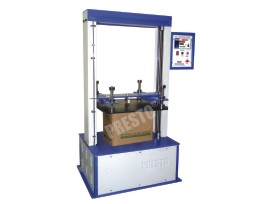Packaging has a big and important role for many purposes, and it would be hard to do them without the proper packaging boxes. The corrugated and cardboard boxes are among the most commonly used packaging containers that are used worldwide for the purpose of shipping.
It is important to ensure that packaging materials are lightweight and stronger so that they could easily survive the shocks and drop they have to bear during the transportation. Additionally, when the packaging containers are lightweight, it becomes easier to handle and ship them to the desired places in very less time. Another property desired in the packaging containers is the recyclability. If the container is easily recyclable, it would be very good for the environment.
As the packaging containers are of vital importance for many businesses, it is essential to ensure that the quality of the packaging containers used for shipping or storage of the products is of the best level. For best quality assurance, firstly one should have knowledge about the defects found commonly in corrugated boxes.
A major defect of a corrugated or cardboard box is low compression strength. Low compressive strength corresponds to lower the ability of a box to bear any sort of compressive load. When the packaging containers are stacked during shipping, there is an enormous amount of compressive load is exerted on the lowest layer of the corrugated boxes.
Now in order to bear this huge load with great efficiency and without any deformation, it is essential that the box has high compressive strength. If the compressive strength of the box is not enough to beat the load, it will deform easily, and this can be a great threat to the safety of the product that is packed in the box. The only way of avoiding such things during shipping is to ensure best compressive strength is to test the packaging boxes for evaluation of the compressive loads.
Conducting the Test
In order to test the compression strength of a corrugated box, attesting procedure called box compression test is conducted. In the box compression test, the test specimen, which is either a corrugated box or a cardboard box, is placed between two plates. After the box is placed in the right position, the plates are moved gradually which exerts a compressive load on the test specimen. The plates are operated with the help of a hydraulic press which eventually causes the compression of the box.
After the box is compressed and deformed to a specific level, the force applied to the box is a measure which is then used for calculation of the compression strength of the box.
The McKee formula is used for calculation of box compression strength which is given as:
BCT= c ECTb {?DMDDCD}(1-b)Z(2b-1)
The Apparatus
As the box compression test is very vital for the better safety of the containers as well as boxes, it is essential to perform the test with great accuracy and with better precision. For this, there is a need for a highly advanced instrument that could perform the task in the simple and easy manner and provide the desired testing data with great accuracy. They box compression tester is an ideal testing instrument that can be used for calculating the compressive strength of the box. The instrument comprises of two plates that are placed between two firm columns. The test specimen is placed between these plates. A hydraulic assembly is used for moving the plates which are eventually used for exerting a force on the test specimen. The load sensors are placed on the moving plates which record the amount of pressure exerted on the test specimen. A digital display provided with the instrument is used for reading the amount of force applied to the test specimen.
